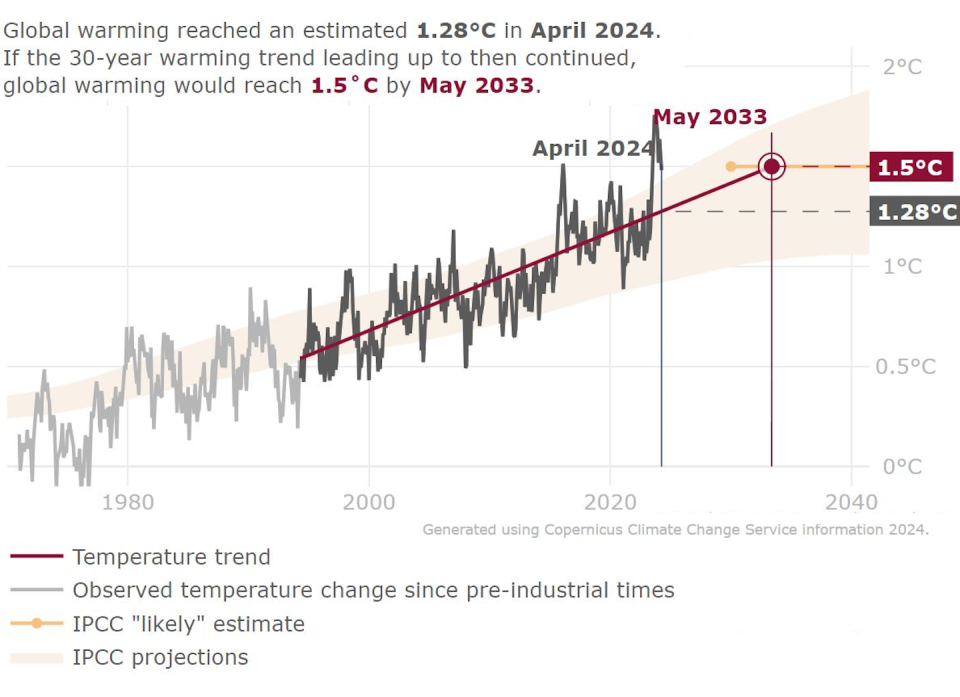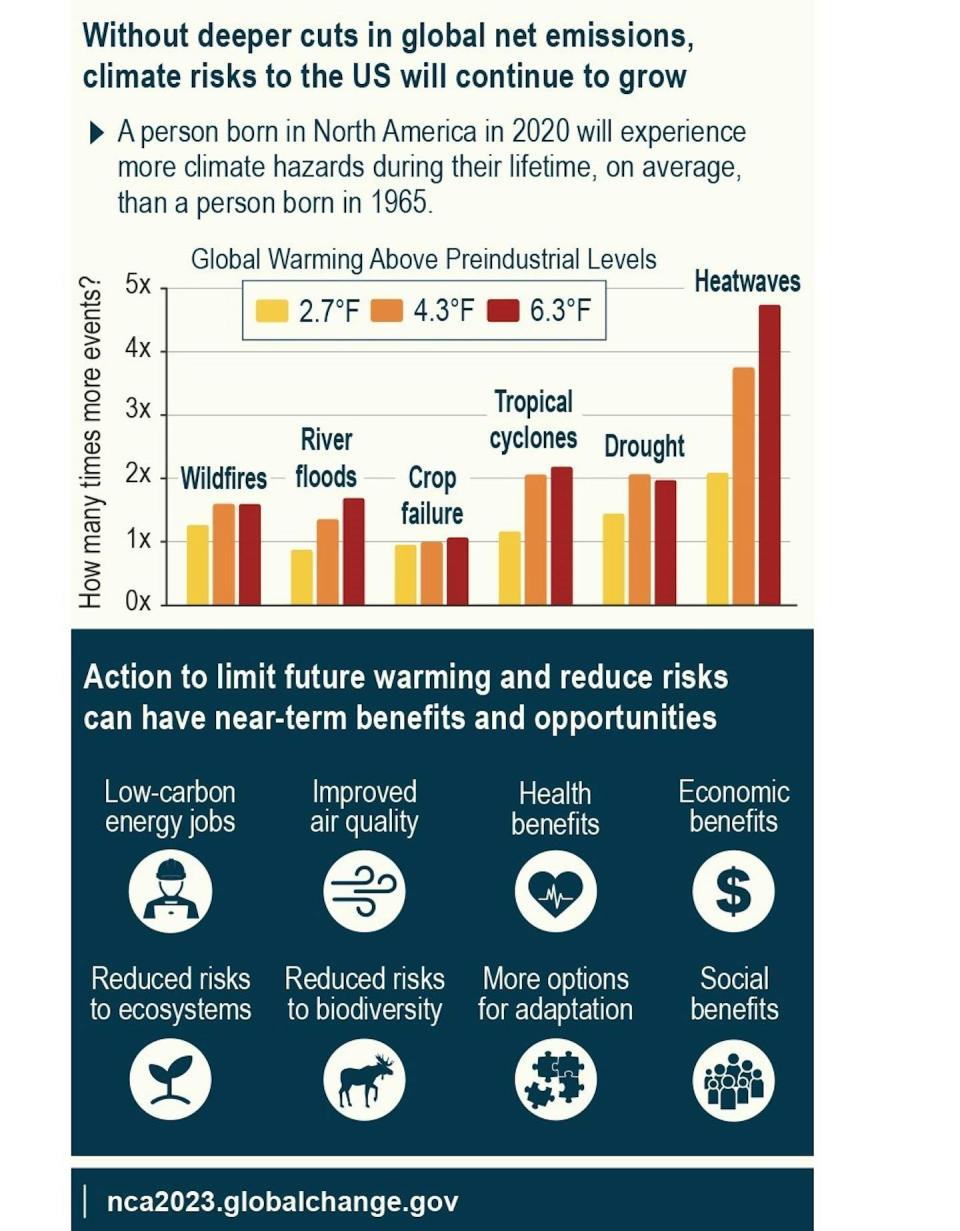One month into the summer of 2024, the vast majority of the U.S. population had already experienced at least one extreme heat wave, and millions of people were under heat alertswith Forecasts warn of more to come.
Death Valley reached 125 degrees Fahrenheit (51.7 Celsius) or more for nine consecutive days in early July. Las Vegas broke its all-time heat record at 120°F (48.9°C). Days of 100-degree heat have dried out California’s landscapes, fueling wildfires there and in the northwest. Oregon reported several suspected heat deaths.
Globally, the planet had its hottest day in at least eight decades of record keeping on July 21 – and then broke the record again on July 22, according to the European Union’s Copernicus Climate Change Service.
Extreme heat is part of a longer trend: Each of the last 13 months has been the hottest ever recorded that month globally, including the hottest June, the EU service reported in early July. It also found that the average temperature of the previous 12 months was at least 1.5 C (2.7 F) warmer than the pre-industrial average of 1850-1900.

The 1.5C warming limit can be confusing, so let’s take a closer look at what it means. At the Paris climate agreement, countries around the world have agreed to work to keep global warming below 1.5C, however this refers to the average temperature change over a 30-year period. A 30-year average is used to limit the influence of natural fluctuations from year to year.
So far, Earth has only exceeded this limit for a single year. However, it is still extremely worrying. We study Weather Patterns involving heat. The world appears to be on track to surpass the average limit of 1.5°C in 30 years within 10 years.
Heat is becoming a global problem
Several countries experienced record heat across the Americas, Africa, Europe and Asia in 2024. In Mexico and Central America, weeks of persistent heat beginning in spring 2024, combined with a prolonged drought, led to severe water shortages and dozens of deaths.
Extreme heat turned into a tragedy in Saudi Arabia, as more than 1,000 people on Hajja Muslim pilgrimage to Mecca, collapsed and died. Temperatures reached 125 F (51.8 C) at the Grand Mosque of Mecca on June 17.


Hospitals in Karachi, Pakistan, were overwhelmed amid high heat weeksfrequent power outages and water shortage in some areas. Neighboring India faced temperatures around 120 F (48.9 C) for several days in April and May which affected millions of people, many of them without air conditioning.
Japan issued heatstroke alerts in Tokyo and more than half of its prefectures as temperatures rose to record highs in early July.
Large parts of Europe were suffering from a long heatwave as the 2024 Summer Olympics set to open in Paris at the end of July.
The Climate Connection: This Isn’t “Just Summer”
While heat waves are a natural part of the climate, the severity and extent of heat waves so far in 2024 are not “just summer.”
A scientific assessment of the violent heat wave in the eastern US in June 2024 estimates that such intense and long-lasting heat was two to four times more likely occur today due to human-caused climate change than would have happened without it. This conclusion is consistent with the rapid increase over the past few decades in the number of heat waves in the US and their occurrence outside of peak summer.
These record heat waves are happening in a climate that is globally more than 1.2 C (2.2 F) warmer – when looking at the 30-year average – than it was before the industrial revolution, when humans began releasing large amounts of climate-warming greenhouse gas emissions.


While a temperature difference of a degree or two when you enter a different room may not even be noticeable, even fractions of a degree make a big difference in the global climate.
At the height of the last ice age, about 20,000 years ago, when the Northeastern US was under thousands of feet of ice, the global average temperature was only about 11 F (6 C) colder than it is now. So it’s not surprising that warming of 2.2 F (1.2 C) so far is already rapidly changing the climate.
If you thought this was hot
Although this summer will likely be one of the hottest on record, it is important to realize that it could also be one of the coldest summers in the future.
For populations especially vulnerable to heat, including young children, older adults and outdoor workers, the risks are even greater. People in low-income neighborhoods where air conditioning may be inaccessible and renters which often do not have the same protections for cooling and heating will face increasingly dangerous conditions.
Extreme heat can also affect economies. It can bend railroad tracks and cause wires to give way, leading to delays and traffic disruptions. Can also overload electrical systems with high demand and lead to blackouts just when people have the greatest need for refrigeration.
The good news: there are solutions
Yes, the future in a warming world is scary. However, while countries are not at the right pace to meet the goals of the Paris Agreementthey made progress.
In the US, the Inflation Reduction Act of 2022 has the potential to reduce US greenhouse gas emissions by nearly half by 2035.
Switching from air conditioners to heat pumps and grid geothermal systems it can not only reduce fossil fuel emissions but also provide cooling at a lower cost. O cost of renewable energy continues to fall and many countries are increasing political support and incentives.


There is much humanity can do to limit future warming if countries, businesses and people around the world act urgently. Rapidly reducing fossil fuel emissions can help avoid a hotter future with even worse heat waves and droughts, while also providing other benefits, including improving public health, creating jobs and reducing risks. for ecosystems.
This is an update to an article originally published on June 26, 2024.
This article was republished from The conversation, an independent, nonprofit news organization that brings you trusted facts and analysis to help you understand our complex world. It was written by: Matthew Barlow, UMass Lowell It is Jeffrey Basara, UMass Lowell
See more information:
Mathew Barlow received funding from NOAA’s Modeling, Analysis, Forecasts and Projections Program to study heat waves.
Jeffrey Basara has received funding from the United States Department of Agriculture and the National Science Foundation to study flash droughts and extreme temperatures.



































